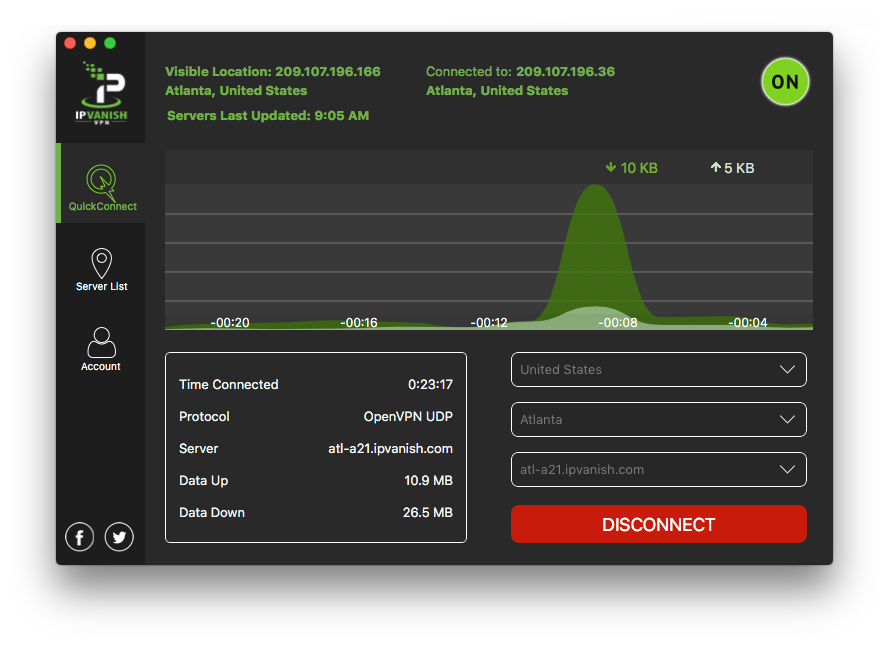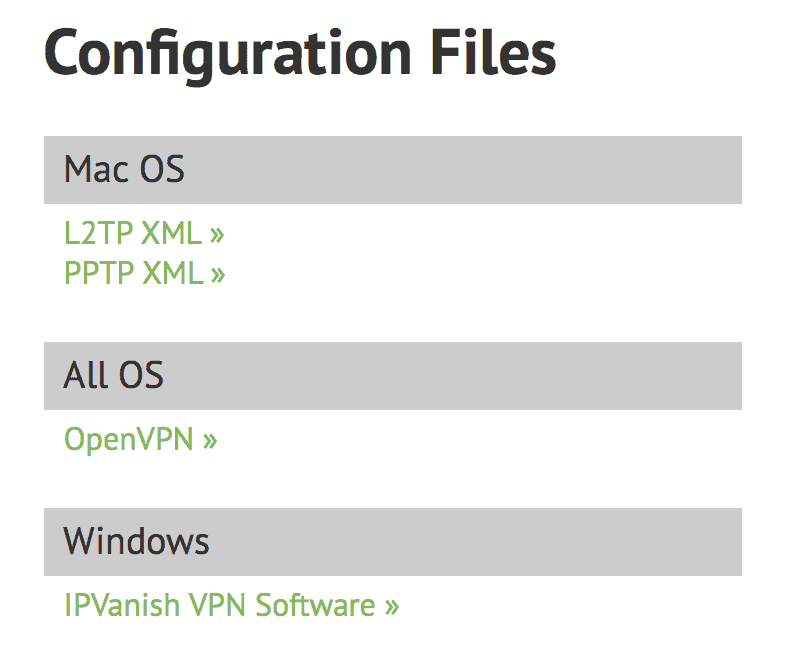Mac users running macOS Sierra have various options to set up IPVanish, the VPN service we found to be among the best available. They can either: a) use the macOS desktop client; b) manually set it up via System Preferences; c) use an OpenVPN client. In this article we will guide you through the different setup methods.
- Ipvanish Vpn For Mac Desktop
- Ipvanish Vpn For Mac
- Ipvanish Free Account
- Get Ipvanish
- Uninstall Ipvanish Mac
Click on the Apple icon in the top left corner of your screen and choose System Preferences, then click on Network. Click the + button to add a new connection. IPVanish VPN and storage tools simplify online security for the whole home with setups for desktop, mobile, consoles, and routers. Shield your internet activity with VPN privacy, or pair VPN + storage for complete online protection. Vpn-software-setup-choose-your-platform-ipvanish-2021-02-04-22-03-18 Let's kick it off by going to IPVanish.com and hitting the Downloads button. Choose the Mac option.
IPVanish supports four protocols: OpenVPN, IPSec, L2TP and PPTP. Apple phased out support for the last of these in macOS Sierra, but Mac users running macOS 10.11 or earlier can still use this protocol.
Setting up IPVanish Using the Desktop Client
This should be the easiest way to connect to a secure VPN server and to protect your online privacy. IPVanish has developed apps for the most popular operating systems, both desktop and mobile, so if you are using macOS Sierra, you simply need to:

Download CleanMyMac X from MacPaw’s website and clean up to 500MB of junk data from your computer while enjoying all the features of the software without major limitations.
Ipvanish Vpn For Mac Desktop
- Download the Mac app from IPVanish’s website and install it.
- Launch the app, enter your credentials and select any of the more than 850 secure VPN servers available in 60+ countries.
- Click Connect and type the admin password when the IPVanish Helper Tool install prompt appears.
Available IPVanish Protocol Options
The desktop app uses the OpenVPN UDP protocol by default to connect you to the selected VPN server, but you can choose OpenVPN TCP, IPSec or L2TP in Preferences.
Setting up IPVanish Manually
If you don’t want to install another Mac app, just set up IPVanish manually in the Network settings of System Preferences. Follow these steps to get this connection rolling:
- Launch System Preferences and select “Network”.
- Type the admin password then click on the “+” button to add another connection, and select VPN as the interface.
- You can choose either IKEv2, L2TP over IPSec or Cisco IPSec as the protocol. If you choose IKEv2 (Internet Key Exchange version 2), then you will have to fill in a ‘Remote ID’ field, whereas if IPSec is your choice, the extra field will be ‘Shared Secret’.
- Pick a server address (available under your IPVanish account and ‘Server List’).
- Enter your credentials, and click “Apply”, then connect.
Ipvanish Vpn For Mac

Ipvanish Free Account
IPVanish Authentication Settings
Setting up IPVanish Using an OpenVPN Client
OpenVPN is an open source VPN product launched by OpenVPN Technologies, a company based in Pleasanton, California. While paid VPN service providers use this protocol to connect their users to their servers, there are also free OpenVPN Connect clients, such as Tunnelblick, which can be downloaded and configured to connect to IPVanish’s servers. The setup process is longer compared to the previous two since it involves multiple steps.
- Download Tunnelblick from their website.
- After installing the app, head over to IPVanish’s website and log into your account.
- Download the OpenVPN configuration file (.ZIP).
- Unzip the configuration folder and add the .TBLK extension to it.
- Launch Tunnelblick in administrator mode to add the configuration file.
- Tunnelblick will ask for your approval to install a certain number of configurations.
- You might need to restart Tunnelblick to finish the installation process.
- Launch Tunnelblick again, select a server from the long list, and connect.
Tunnelblick Configuration File Prompt
Tunnelblick Configuration File Prompt 2
IPSec vs OpenVPN: Performance
If you are looking for convenience, IPVanish’s desktop client is your best option as it connects quickly to the selected secure VPN server. That’s a huge benefit, as is the possibility of choosing the location of your preference. That’s something you won’t get with the manual setup of IPVanish using macOS' System Preferences app. In this way you’ll be stuck with the server you picked during the setup process, and will have to manually readjust if you want a different one.
Get Ipvanish

Uninstall Ipvanish Mac
Still, if you are looking for faster connections, manual setup is the way to go as it gives the option to choose from the IPSec and IKEv2 protocols. While it is now the most popular protocol, OpenVPN provides a poorer performance than IPSec. Both protocols are secure, however: OpenVPN uses SSL/TLS for its secure protocol, securing data at the Transport Layer level, while IKEv2/IPSec secures data at the IP level.
Best VPN Services for Mac of 2021
| Rank | Provider | Info | Visit |
| Editor's Choice 2021 |
| ||
| |||
|
Which Setting Is for Me?
Depending on what you are looking for, you can select either the IPVanish desktop app or configure your VPN connection manually through System Preferences. The latter doesn’t support the OpenVPN protocol – you’ll need to download and configure an OpenVPN Connect Client for that – so if you are looking for the convenience of an easy configuration, the desktop app is the best choice.

However, if you don’t mind spending some time on manual setup and the lack of OpenVPN support, you can set up your VPN connection using macOS and forget about the hassle of downloading yet another Mac app.
Best Mac Optimization Software of 2021

| Rank | Company | Info | Visit |
| |||
| |||
|
Get the Best Deals on Mac Optimization Software
Stay up to date on the latest tech news and discounts on Mac optimization software with our monthly newsletter.
